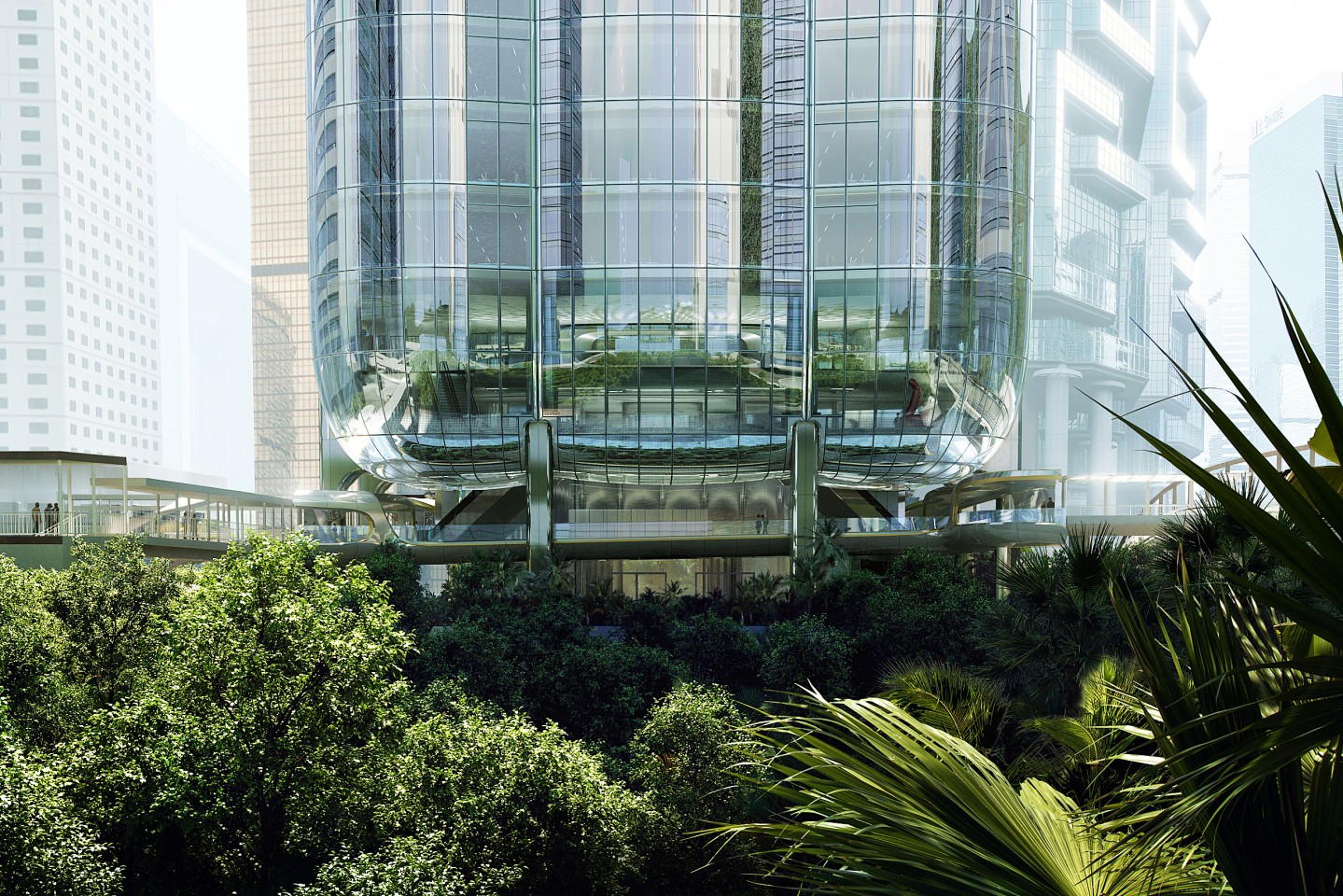Envisioned as an orchid tree about to blossom, the Zaha Hadid Architects-designed 2 Murray Road is under construction in Hong Kong’s Central Business District. The skyscraper will feature a distinctive overall form and sustainable design that prioritizes fresh air ventilation, as well as an AI-powered management system that enables workers to move from street to desk without touching any doors or elevator controls.
2 Murray Road will rise to a maximum height of 190 m (623 ft) on the site of a former car park and include 36 levels above ground, plus five basement levels. It will be elevated on supports, creating sheltered courtyards and gardens filled with greenery below. Its interior will offer spacious, column-free office spaces and feature a greenery-filled sky garden with a running track and other exercise facilities. Up at the top will be a banquet hall offering choice views of the city.
“Echoing the organic forms of the natural world; the redevelopment connects with the adjacent public gardens and parks,” says the firm. “These tranquil outdoor areas flow into the generous communal spaces of the interior; the craftsmanship and precision of the curved glass facade enhancing this seamless connectivity between the building’s interiors and the surrounding gardens and city beyond. The design reinterprets the structural forms and layering of a Bauhinia bud about to blossom. Known as the Hong Kong orchid tree, the Bauhinia x blakeana was first propagated in the city’s botanic gardens above the Murray Road site and its flowering bud features on Hong Kong’s flag.”

MIR
The project is slated to receive the LEED Platinum and WELL Platinum green building standards and will make use of recycled building materials. Its glazed exterior will be designed to withstand severe typhoon weather and to reduce heating and cooling requirements.
A smart ventilation system will detect occupancy in each room and adjust indoor air temperature and humidity accordingly, while providing fresh air ventilation. This will be connected to two weather stations which will monitor real-time outdoor air quality. High-efficiency HVAC (heating, ventilation, and air conditioning) will complement the fresh air, and daylight sensors will reduce artificial lighting when natural light levels are deemed sufficient. Yet another ventilation system will also be powered by solar panels.
Additionally, a high-tech building management system will provide office workers a contactless pathway from the street to their desk, plus other areas like lounges and bathrooms. This will be achieved with AI-assisted elevator controls and smartphone, contactless smart card, and biometric-controlled doors. Though COVID-19 isn’t specifically mentioned by ZHA, the future of office space in a post-pandemic world is certainly on people’s minds and we may well see more of this approach in the future.
We’ve no word yet on an expected completion date but construction is already well underway. It’s being developed by Hendersen Land and also involves Arup and Ronald Lu & Partners.
Source: Zaha Hadid Architects
Source of Article